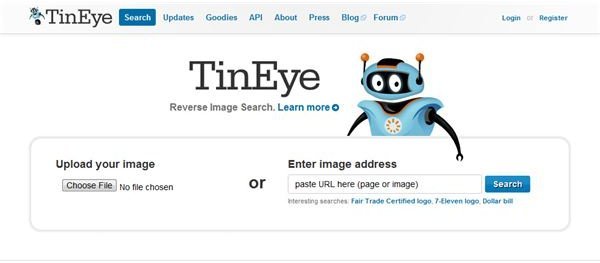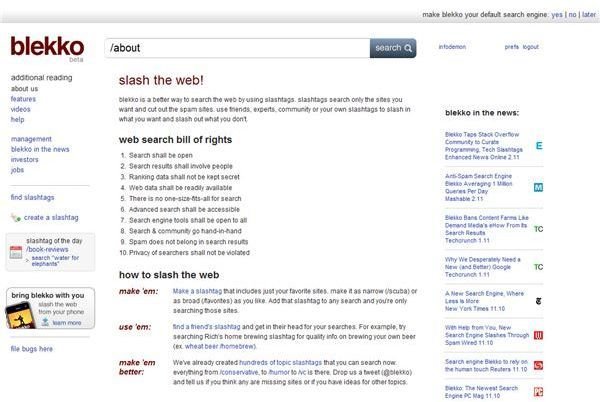The coolest Internet Search Engines
Search: The Final Frontier?
In the modern search environment, there is no question that Google is king. In spite of the time and effort being invested by competitors like Yahoo and Bing, Google still holds an enviable 85% of the worldwide search market share (1). Moreover, Google is determined to stay on top of the pile. As criticisms of its search rankings mounted, Google recently responded with Panda - an algorithm update that has shaken content contributors to the core and generated not only pages of both positive and negative criticism, but search results pages with a noticeably different focus than the ones that went before (2).
However, while Bing and Yahoo continue to tackle Google on its own terms, there are a number of search engines out there that are approaching search in a different way. So what are the coolest search engines out there, and why do they deserve to be described as such?
Blekko: The Wisdom of Crowds
Blekko, which I’ve mentioned briefly in New Directions in Search, takes a very interesting approach to ranking search results. Rather than relying on an algorithm to define rankings, Blekko invites its users to submit slashtags for popular topics - essentially, a folksonomy of limiters designed to eliminate the dross from its results pages. To cite a popular example, if you were searching for reviews for the iPad 2 you could append the slashtag /techblogs to your search term, and you would instantly eliminate all results not emanating from reputable tech bloggers. All the SEO optimized sites attempting to sell you an iPad 2 would never darken the listings on your search results page.
Not only is this an appealing concept: Blekko wants you to contribute. Users are invited to sign up, submit their own slashtags, and build the pool of crowd-sourced knowledge. It will be interesting to see if Blekko can develop the kind of momentum that has built Wikipedia into a tour de force (albeit an imperfect one), or whether the additional layer of user effort required will limit its impact in the long-term.
DeepDyve: Exploring the Invisible Web
The Invisible (or Deep) Web is something that search engines have been struggling with since the inception of the modern Internet. Search engines gain traction by linking people with the site that provides the best possible answer to their search query. But when a site is locked down beneath a barrier that a standard search engine can’t penetrate - for example, authentication or subscription - what does the search engine do?
There are a few different answers to this, and for the cash-strapped and organized student the obvious solution is to use Google Scholar and then ask their local public (or, if affiliated to an institute, academic) library for an inter-library loan for the article. But this requires either advance planning or enough time for the article to arrive.
The search engine DeepDyve offers an alternative solution. DeepDyve offers a deep web search, and then allows users to rent (i.e. view without downloading or printing) articles for a limited period. While there is a charge involved, it is often up to 90% less than the purchase cost of an article, putting it within range of searchers with limited budgets like university students. With a database of more than 30 million scholarly articles, DeepDyve is an interesting alternative for accessing the deep web - especially for those, like a student with a tight essay deadline, for whom temporary access is sufficient.
Should you be interested in learning more about the Invisible Web then make sure to check out our article The Difference Between Deep and Dark Web Search Engines.
TinEye: a New View
The success of Google image search is indicative of the impetus behind the drive for a really solid image search engine. Of the options currently on the market, TinEye offers one of the more interesting approaches.
TinEye is a reverse image directory, so rather than search for pictures it allows you to submit an image and find out where it’s been used, whether better copies of it are available, and even whether or not it’s been published in a modified form.
Not only is TinEye very useful for finding out where an image is being used and how, it also allows image creators to ensure that copyright law is being followed appropriately and for creative commons licensers to see how their images are being used.

Wayback Machine: Nothing is Forgotten
It’s easy to forget about the Wayback Machine when thinking about Internet search. As the most comprehensive archive of online activity currently available, the Wayback Machine allows us to dig into the history of websites that either no longer exist or have changed substantially since their inception.
Through the Wayback Machine you can track down the friend you once had on a PHP bulletin board forum in 2001; you can check out your company’s website to see what it looked like before you were brought in to be the marketer and manager, and see how it evolved over time.
The Wayback Machine is often overlooked as a search innovator, or dismissed because it is far from a complete archive of the Internet. However, for some web sites it does offer a picture over the course of time.
Conclusion
Of course, when talking about innovative search it doesn’t do to forget Google. The search behemoth has successfully remarketed itself a number of times over, ridden out the failures of offshoots such as Answers and Wave, and continued to achieve success by listening to its users, allowing its engineers to work on interesting and innovative projects (3), and adapting its core functions to meet the demand of an inevitably expectant public.
The good news is that there are other search engines there doing things that are fundamentally different to Google. And the more variety there is in the search market, the more we (as searchers ourselves) benefit. Here 5 Awesome Invisible Web Search Engines you may want to check out as well!
References
-
Netmarketshare - https://marketshare.hitslink.com/search-engine-market-share.aspx?qprid=5
-
Hines, Krisit. Google Panda Update: Say Goodbye to Low Quality Link Building - https://searchenginewatch.com/3641987
-
Google Blog - https://googleblog.blogspot.com/2006/05/googles-20-percent-time-in-action.html
- Screenshots by author
